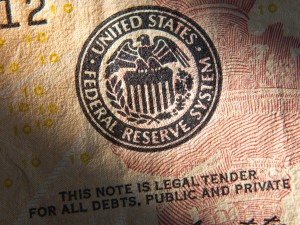Wednesday September 21: Five things the markets are talking about
The focus shifts to the Fed now that the BoJ has scrapped their monetary base framework in favor of “Yield-Curve Control.” Only time will tell if Kuroda’s new shift in policy will be a success. It seems that Japanese policy makers are hoping that the Fed will be doing most of the heavy lifting. Are markets prepared for an FOMC surprise hike today?
Despite the odds for a Fed rate hike occurring being very low this afternoon (2pm EDT); if Ms. Yellen and company happened to surprise the markets it would be a massive wake up call for all asset classes. Bond yields would probably be least effected given the recent back up in yields, equities can afford to give up some of the summer premium, while FX moves could see the largest moves due to the contained ranges in Q3.
After the Fed it’s the Reserve Bank of New Zealand’s (RBNZ) turn (05:00pm EDT). Governor Wheeler is expected to leave the RBNZ’s cash rate unchanged at +2.0%, while again reiterating that further policy easing is likely to be required. While recent Kiwi growth data has come in stronger than expected in Q2, this alone will not be enough to offset weak inflation. Perhaps the Kiwi will be knocked from its lofty perch (NZ$0.7320)?
1. BoJ scraps monetary base framework in favor of “Yield-Curve Control”
The BoJ’s policy review acknowledges its policy has not produced inflation rate recovery to +2% target, in part due to low energy prices.
Hence, a change was required – Governor Kuroda and company have discontinued their monetary base expansion target framework in favor of “QQE with yield control” whereby short-term rates for IOER (interest rate on excessive reserves) would be maintained at -0.1% and long-term targets, 10-years, around zero through JGB purchases. The amount of asset purchases was kept on hold at +¥80tn a year.
Technically, the BoJ is targeting the shape of the yield curve, a benefit for financial equities. The BoJ’s forward guidance has also been strengthened, with the bank stating that asset purchases will continue until inflation is stable above +2%, indicating it will not end immediately after inflation hits the target (lower for longer time frame).

2. Global equities get helping hand from BoJ
World equities have rallied overnight, led by a surge in financial stocks now that the BoJ has set a target for long-term interest rates.
In particular, Japanese banks and insurance companies have rallied hard in relief that their policy makers did not cut interest rates further into negative territory (A steeper yield curve tends to boost banks profitability).
The Nikkei Stock Average jumped +1.9%, while the TOPIX banks sector jumped around +7%. The Hang Seng Index closed up +0.6%.
Note: trading was rather muted because of uncertainty over the outcome from the Fed later this afternoon.
Elsewhere, Europe’s STOXX 600 is up +1% in early trading with eurozone banking shares up nearly +3% and poised for their best day in more than two months. The FTSE is being supported by commodity, mining and energy stocks trading higher on the back of higher energy prices.
U.S futures are expected to open +0.4%.
Indices: Stoxx50 +0.9% at 2,997, FTSE +0.4% at 6,859, DAX +0.9% at 10,488, CAC-40 +1.0% at 4,434, IBEX-35 +0.9% at 8,764, FTSE MIB +1.1% at 16,392, SMI +0.4% at 8,267, S&P 500 Futures +0.4%

3. Crude gets a lift from drawdowns
Oil prices have rallied +1% overnight, pushed higher by a drawdown in U.S. inventories and an oil workers strike in Norway may impact output. Also, strong import numbers from Japan (Aug. 0.5% m/m) is helping.
U.S. WTI light crude futures are up +1.93% or +85c cents at +$44.90 a barrel. Yesterday’s API data showed a -7.5m barrel draw to +507.2m.
(Note: Oct contract expired yesterday at +$43.44 a barrel. Nov contracts are now the front month).
Brent crude is trading at +$46.53 per barrel, up +65c or +1.42% from yesterday’s close. Its biggest support is coming from the oil service worker strike in Norway that risks impacting output in Western Europe’s biggest crude producer.
Ahead of the FOMC announcement, oil traders have to deal with the EIA report (10:30am EDT). The market is expecting a build of +3.2m, which would temporarily cap prices.
After the Fed, it’s on to Algiers for next week’s OPEC meeting (Sept 27).
Gold is reversing earlier losses, as the ‘big’ dollar pars its gains ahead of the Fed’s policy outcome. Spot gold is trading up +0.5% percent at +$1,321 an ounce.

4. BoJ decision steepens its own yield curve a tad
The initial reaction to the BoJ’s decision saw 10-year JGB’s back up +7bps to +0.005% after Kuroda said that they would adjust purchases of sovereign debt to keep the rate around zero. It has subsequently declined to minus -0.035% ahead of the U.S open.
The change to the BoJ’s bond-buying program is unlikely to convince investors to return home to invest in Japanese government bonds – in fact it should encourage further flight to overseas higher yielding debt like treasuries and periphery Europe.
Unless the Fed begins its rate normalization policy soon, the U.S curve could flatten because of overseas interest. The rate on U.S 10’s rose by +1bps to +1.70% while German Bund yields increased by +2bps to zero.

5. FX ready and waiting for the Fed
As to be expected, USD/JPY saw decent two-way action pre- and post- BoJ announcement. However, somewhat disappointing for the BoJ, yen outright (¥101.42) currently sits below yesterday’s close levels ahead of the U.S open.
The yen’s price action would suggest that the BoJ appears to have lost its ability to influence its own currency value over the longer run.
It’s now on to the Fed (02:00pm EDT, Yellen speaks at 02:30pm EDT) where investors are now closely watching if U.S policy makers will hint at future tightening, especially after recent soft U.S. economic indicators have pared market expectations for higher short-term rates in the near future.
A “hawkish tilt” should see the “big” dollar strengthen, but that strength is expected to be somewhat capped and not the beginning of a new trend given the lower Fed funds rate and foreign interest to flatten the U.S curve.
Now, if the Fed does surprise, the market is dealing with a whole new game plan, one that few have yet devised
In European trading, USD/JPY was at ¥101.48-50, EUR/USD was at €1.1149-50 and GBP/USD was at £1.2996-98.

